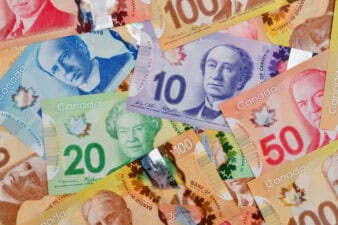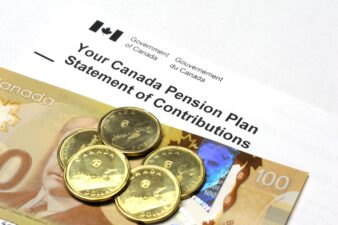A new survey released by Royal Bank of Canada shows that Canadians fail to properly invest in mutual funds, stocks, and exchange-traded funds. Primarily, Tax-Free Savings Account (TFSA) investors mostly use their TFSAs to store savings rather than invest in high-return assets. The survey found that 42% of TFSA savings do not take advantage of tax-free returns because they are not earning interest from dividend stocks.
The poll also discovered that Canadians now prefer TFSAs to Registered Retirement Savings Plans (RRSP), and 64% of Canadians over age 55 said they would choose a TFSA over an RRSP if they could only choose one or the other.
The top five TFSA Holdings
- 42% — savings accounts and cash
- 28% — mutual funds
- 19% — stocks
- 15% — GICs/term deposits
- 7% — ETFs (exchange-traded funds)
While it is great that Canadians are saving, low investments in high-dividend stocks mean that Canadians are missing out on the beauty of tax-free compound interest. Stuart Gray, director of Financial Planning at RBC, commented: “The magic happens when you invest the money within your TFSA and gain the benefit of compounding. You gain interest not only on your original investment but also interest on your interest.”
Canadians should re-evaluate their savings plans to maximize the tax benefits they receive from their TFSA. RBC recommends that Canadians put short-term savings into GICs, which will protect initial investments at a fixed interest rate. Meanwhile, mid-term savings up to five years should find a combination of mutual funds and GICs in which to preserve the cash.
Retirement savings are an entirely different story. Younger savers especially should not be afraid of taking on some long-term risk. Canadians who still have at least 10 years until retirement should invest in high-dividend stocks with strong price histories. Don’t be one of the four in 10 Canadians who believe that TFSAs are for savings and not tax-free income generation.
Every Canadian should learn how to make proper stock market investments. Learning how to read a company’s financial statement is not difficult. There are many online resources available to quickly learn the necessary terminology to become a stock market aficionado.
Look for dividend-issuing stocks with positive earnings per share that have been deleveraging. Deleveraging is the process of paying down debt. TFSA investors will increase their chances of protecting their initial investment if the company is currently paying down debt and earning a profit.
Foolish takeaway
The dividend returns are what you want to look out for. The high dividend yield will mean that you are getting the highest performance you can buy per dollar. Reinvest those dividends to take control of your finances fully.
Remember that the dividend returns are tax-free, and they represent the interest earned on your investment. That interest is usually paid on a quarterly basis. If you reinvest that interest into additional qualified dividend shares, you will benefit from the power of compound interest. Two industries to consider are insurance and banking. These are two industries that will never fail. These companies might go through some ups and downs, but in 10-15 years when you retire, the money will still be there, and it will have compounded gloriously.







